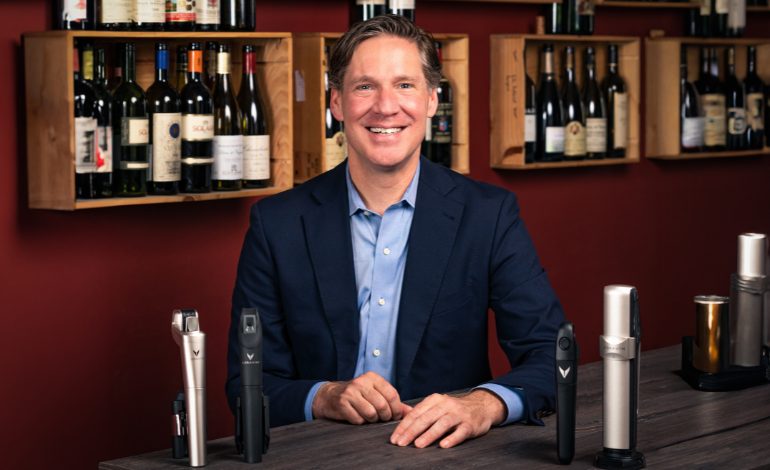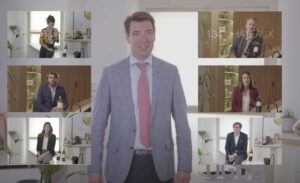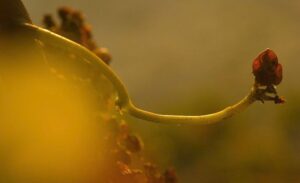Ten years after its arrival in France, we take a look back at the amazing story of Coravin, every wine lover’s favourite device


Coravin, which this year celebrates its tenth anniversary on the French market, has established itself as a tool perfectly in tune with the times, as consumers shift to drinking less but better. We meet its founder, Greg Lambrecht.
By Martin Lemaire
We Frenchmen must swallow our pride, especially for the most patriotic amongst us, but the truth is unavoidable: the most significant innovation in recent years in terms of wine consumption is not French, it’s American. Coravin, first released in the United States in 2013 and introduced to the French market a year later, was originally dreamt up like some kind of mad scientist’s tool in the late 1990s by the company’s founder, or rather its lead inventor, Greg Lambrecht. At the time, he had just come to a portentous conclusion: every guest gathered at the same table should be entitled to ask for a different wine. Too bad for those who prefer consensus. Being able to choose should not mean having to compromise – at least, not if you follow the philosophy of this former medical engineer. Lambrecht’s background is important because Coravin’s precursor was, in fact, a needle used to inject chemotherapy into cancer patients. The medical analogy goes no further, but the idea is clear: why not use this needle to extract wine from a bottle without opening it, while injecting gas to prevent oxidation?
Greg Lambrecht created the first prototype, still in existence today, to meet a personal need. It must be said that its appearance is more reminiscent of a torture device than of the joyful prospect of enjoying a glass of wine! In 1999, his wife, then pregnant with their first child, couldn’t drink wine. Bottles that they would once have finished together with ease in a single evening were no longer getting emptied. “There’s also the fact that I started drinking less but better, so I was consuming more expensive wines that I couldn’t imagine pouring down the drain,” he recalls. Coravin is, in a way, the tangible arrival of the “drink less but better” movement, a trend that has swept through the wine industry in 2024. The challenge was to find the ideal gas to preserve the wine from oxygen without affecting its taste or texture. Argon, naturally present in the atmosphere and inert, was chosen because “it’s a lazy gas, which doesn’t dissolve in liquid,” explains Lambrecht.

Over the past ten years, Coravin has made a place for itself in the homes of affluent wine lovers – the price remains a barrier for many drinkers – and in restaurants eager to offer a by-the-glass wine selection worthy of the name. The company claims to have sold 1.5 million units since its launch, and it shows no signs of slowing down, even though wine consumption is declining. “Wine sales are decreasing, but Coravin sales are increasing!” Greg Lambrecht rejoices.
Since its beginnings, the business has diversified, notably with the launch in 2021 of a system dedicated to sparkling wines. The new device is entirely different from the original model: it involves opening the bottle, resealing it with a special stopper, and reinjecting not argon but carbon dioxide. The new technology required the intervention and expertise of the French, specifically the champagne houses owned by LVMH. This innovation has shaken up the world of sparkling wines, which are by nature ephemeral, although it still imposes a limited preservation period of four weeks, compared to several months or even years for the tool dedicated to still
The American company has launched a limited edition of its flagship model in green, as a nod to the environmental ambition of planting a tree for every unit sold. Initially met with resistance in France – much less so, unsurprisingly, in the open-minded New World – Coravin is now widely accepted. And for good reason: Greg Lambrecht has more than one trick up his sleeve to win over sceptics. We tasted a Sauternes that had been “Coravinned” for 9 years and found the pleasure it offered us undiminished by time. That, however, was not a record – not even close!
Lambrecht, a most amiable character and born raconteur, told us that, before he owned any bottles of truly fine wine, he tested the device on an ordinary Australian Syrah, pouring the first glass in 2003, when Coravin was still just a prototype. Twenty years later, he invited Jancis Robinson, one of the world’s most influential wine critics, for a special experiment. Having filled two glasses with the same wine – one from the bottle opened in 2003 and the other freshly opened – he asked the British journalist to spot the difference. Her response: “There’s no difference: both are equally bad!”.
“In partnership with Le Figaro Vin”






